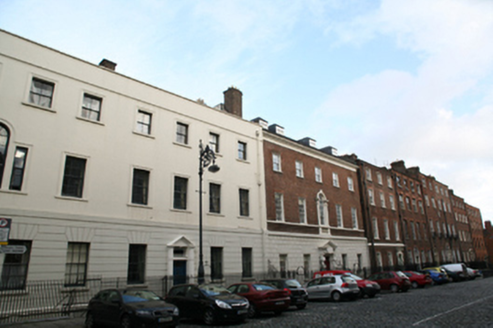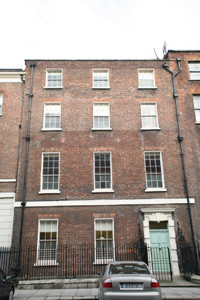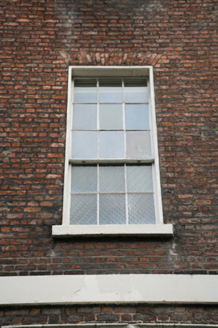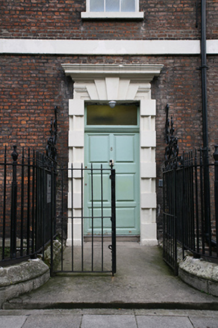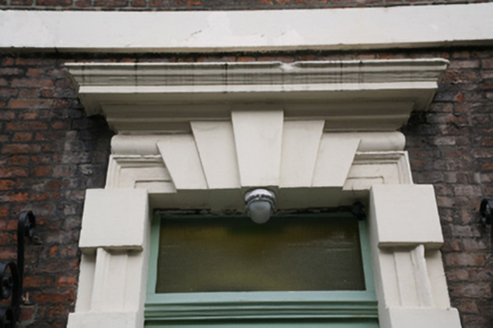Survey Data
Reg No
50010686
Rating
Regional
Categories of Special Interest
Architectural, Artistic, Technical
Original Use
House
In Use As
Convent/nunnery
Date
1730 - 1735
Coordinates
315212, 234989
Date Recorded
08/12/2011
Date Updated
--/--/--
Description
Terraced three-bay four-storey house over raised basement, built by 1735. Now in use as convent together with Nos. 9 & 10. Pitched slate roof to front with double-span roof set perpendicular to street and hipped to rear. Roof hidden behind parapet wall with granite coping and cast-iron hoppers and downpipes breaking through to either end. Brick chimneystacks to both party walls. Red brick walls laid in Flemish bond with masonry platband over ground floor. Moulded granite plinth course over rendered basement walls. Gauged red brick flat-arched window openings with timber lined reveals, masonry sills and replacement timber sliding sash windows throughout, six-over-six pane to ground and top two floors and nine-over-six pane to first floor. Square-headed door opening with painted stone Gibbs doorcase. Possibly replacement timber door with five raised-and-fielded panels and overlight. Quoined architrave surround with graded keystone fronting by pulvinated frieze and surmounted by deep cornice. Door opens onto concrete-paved platform and single step bridging basement. Platform and basement enclosed by wrought-iron railings with decorative scrolled brackets flanking entrance, cast-iron corner posts and finials, all set on moulded granite plinth wall, curved to pavement. Matching iron gate to west and stone steps provide basement access. Rear plot occupied by playground and enclosed by single-storey building opening onto Henrietta Lane.
Appraisal
This house was leased by Luke Gardiner to Nathaniel Clements who developed the site and sold it in 1741 to Richard St George. The house has a shallower plan than the remaining houses on the terrace and has suffered many nineteenth and twentieth-century changes including the loss of the principal staircase. However, the building retains an early closed-string timber stair and its overall external appearance and ironmongery forming an important part of this impressive early Georgian streetscape. Laid out by Luke Gardiner in the 1720s, Henrietta Street is a short cul-de-sac containing the finest early Georgian houses in the city and was named after Henrietta Crofts, the third wife of Charles Paulet, 2nd Duke of Bolton and Lord Lieutenant in 1717-21, the street developed in a piecemeal fashion and set the trends of scale and design in Dublin's domestic architecture.
